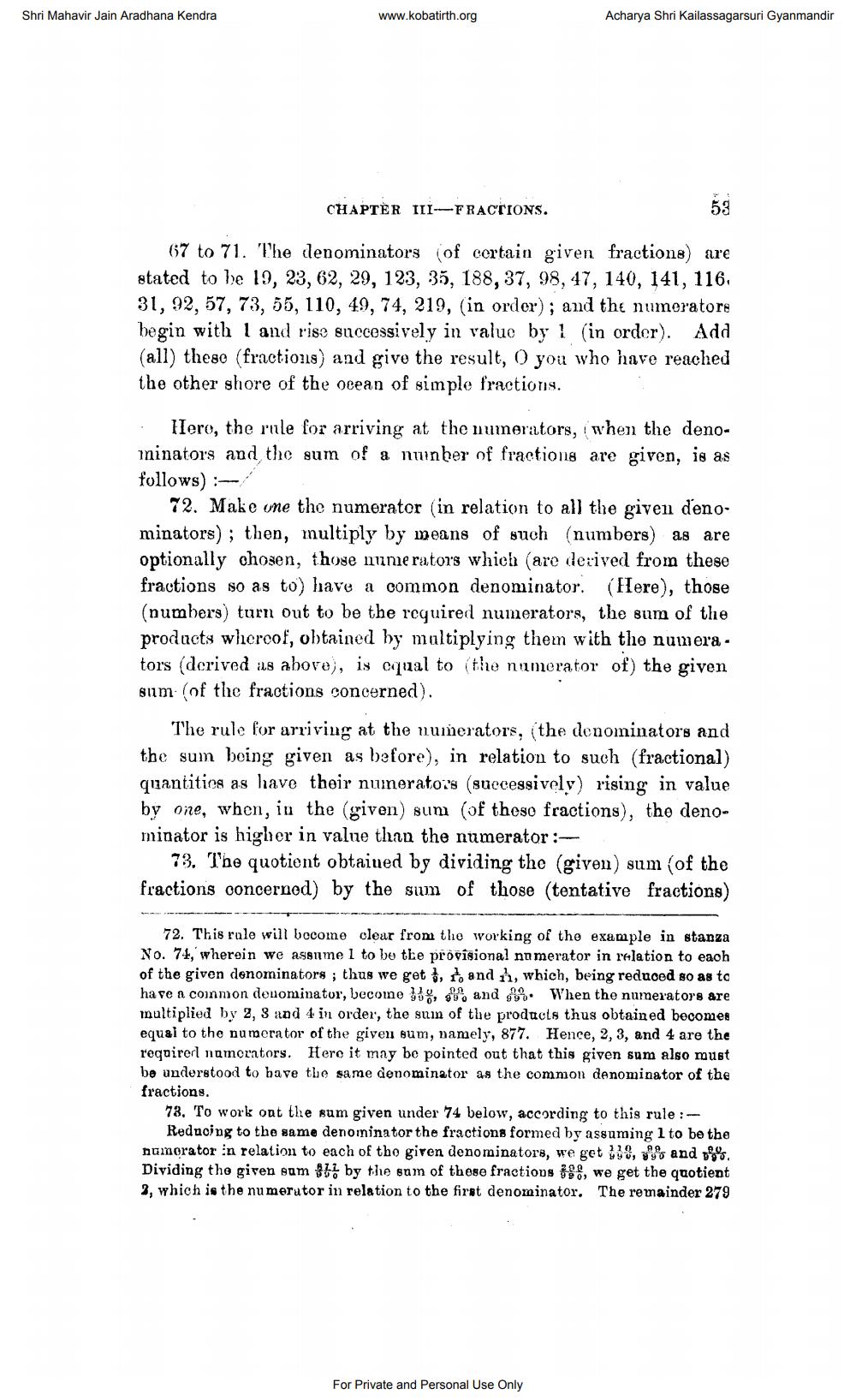________________
Shri Mahavir Jain Aradhana Kendra
www.kobatirth.org
Acharya Shri Kailassagarsuri Gyanmandir
CHAPTER III-FRACTIONS.
67 to 71. The denominators of certain given fractions) are stated to be 19, 23, 62, 29, 123, 35, 188, 37, 98, 47, 140, 141, 116, 31, 92, 57, 73, 55, 110, 49, 74, 219, (in order); and the numeratore begin with 1 and rise successively in value by 1 (in order). Add (all) these (fractions) and give the result, O you who have reached the other shore of the ocean of simple fractions.
... Iero, the rule for arriving at the numerators, when the denoininators and the sum of a number of fractions are given, is as follows) :
72. Make one the numerator (in relation to all the given denominators) ; then, multiply by means of such (numbers) as are optionally chosen, those numerators which are derived from these fractions so as to have a common denominator. (Here), those (numbers) turn out to be the required numerators, the sum of the products whereof, obtained by multiplying them with the numera - tors (derived as above), is equal to the numerator of) the given sum of the fractions concerned).
The rule for arriving at the numerators, (the denominators and the sum being given as before), in relation to such (fractional) quantities as have their nunerators (successively) rising in value by one, when, in the (given) sum of these fractions), the denominator is higher in value than the numerator:
73. The quotient obtained by dividing the (given) sum of the fractions concerned) by the sum of those (tentative fractions)
72. This role will become clear from the working of the example in stanza No. 74, wherein we assume 1 to be the provisional no merator in relation to each of the given denominators ; thus we get 5, 7, and 1, which, being reduced so as to have a coinmon denominator, becoine %, 0% and 99%. When the numerators are multiplied by 2, 3 and 4 in order, the suin of the products thus obtained becomes equal to the numerator of the given sum, namely, 877. Hence, 2, 3, and 4 are the requirerl namorators. Here it may be pointed out that this given sum also must be understood to have the same denominator as the common denominator of the fractions.
73. To work ont the sum given under 74 below, according to this rule :--
Reducing to the same denominator the fractions formed by assuming 1 to be the namorator in relation to each of the giren denominators, we get 138,% and %. Dividing the giren eum 357 by the sum of these fractions 69, we get the quotient %, which is the numerator in relation to the first denominator. The remainder 279
For Private and Personal Use Only




